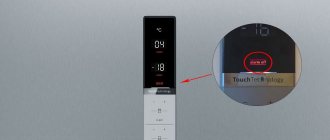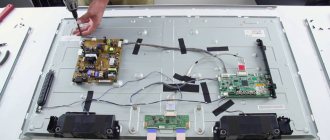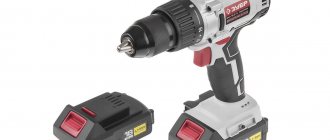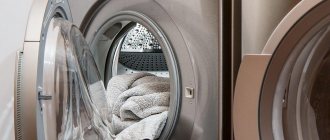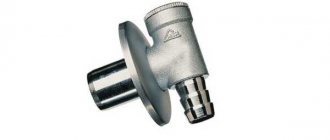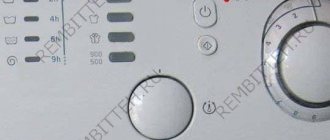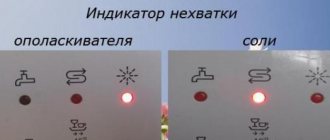The characteristic wheezing of speakers in a car is a fairly common problem that can be easily eliminated if you understand where to look for the cause. For this it is necessary,
- first, “calculate” exactly which (which) of all the speakers in the cabin are working with distortion.
- Secondly, determine at what volume the wheezing appears - at maximum, increased or any volume.
- Thirdly, based on these factors, look for the cause in the places described below.
How to identify wheezing car speakers
Sound distortion in the form of unpleasant wheezing can appear both in all speakers in the cabin, and in just one of them. At the first stage of troubleshooting, it is extremely important to establish this. There are several ways to do this. Let's look at the two most understandable and simple ones.
The first method is to mute the speakers one by one using the car radio settings menu. Even in cheap Chinese options, this feature is usually provided. It is implemented in the form of balance and fader adjustment. Referred to as the BAL and FAD settings, respectively.
Balance is an adjustment of the car radio that allows you to distribute the power of the amplifier built into it between all the right and left speakers. That is, if you twist (press) BAL in one direction or the other, you can completely muffle all the sound from one side of the cabin. For example, if you turned the balance completely to the right or left, and the wheezing of the speakers disappeared, then it now becomes clear whether it is on the left or right relative to the interior.
However, this is still not enough. With the help of balance, you can only determine the side of the speaker that is causing distortion. However, on the one hand there are at least two of them. To figure out whether the front or rear is wheezing, adjusting the fader (FAD) can help. This adjustment redistributes the car radio's output power between the front and rear speakers.
Example. Let's say that after adjusting the balance, it turned out that the wheezing disappeared when all the power was shifted to the right side. In this case, you now need to reconfigure the balance completely to the left. The wheezing will return. Next, using the fader settings, you need to alternately direct all the power to the front left and rear left speakers.
After playing with just these car radio settings, you will definitely figure out the speaker that is wheezing. But only if there are only four of them in the cabin. If there are two or more speakers on any of the four channels, this complicates the situation. And you can get out of it by using the second diagnostic method.
It consists in alternately physically disconnecting the dynamic heads from the signal wires. In this case, you will have to disconnect not from the car radio, but directly from the speakers themselves. The task is to find a speaker, after which, when turned off, the wheezing will disappear. This method, by the way, will help if the radio does not have the settings described above (as a rule, balance adjustment is available on all models, but FAD is not always available).
The next step is to understand at what volume level a wheezing speaker wheezes. Distortion can occur both at maximum volume and at minimum volume. In the process of calculating a faulty speaker, it is very desirable to establish this point. This will be useful for further diagnosis.
In what mode do the speakers wheeze?
This is also important, since the list of possible causes depends on the mode in which distortions occur. There can also be two options here: a) the speakers wheeze only at high volumes; b) distortion is constantly heard. Additionally, pay attention to what exactly you are listening to - radio, recordings from a flash drive or other media, style of music. Perhaps, depending on this, wheezing appears and disappears.
The reasons described below clarify whether they apply to a particular case. This will help save time and speed up diagnosis.
Phone drops
The second reason why the speaker on your phone wheezes is when the device falls. In general, any fall for a phone, one way or another, has negative consequences, but in this case we are talking about dynamics. The fact is that if you fall, there is a high risk that the contact of the speaker cable may come off due to the impact, or the speaker itself may come unstuck. As a result, when listening to, for example, music, extraneous noises, crackling noises, etc. will be clearly audible. This, in fact, is why the speaker on the phone wheezes.
What to do in this situation and how can you fix the problem? Here again there are 2 options.
The first is to disassemble the phone yourself, check the contact on the speaker cable, or fix it if it has become unstuck.
The second option is to take the phone to a service center, where a technician will disassemble it and perform all the necessary manipulations.
What is better to choose is up to you.
Wheezing at minimum or maximum volume
Start testing at low volume. If wheezing appears, then the problem lies in the connection of the wires to the speakers. Most likely they are coming off or damaged. To do this, you will have to disassemble the equipment and look at the internal components.
If everything works well, keep raising the volume. When wheezing occurs at high volume, the following types of problems are possible:
- Large particles of dust or dirt may cause vibrations and distortion of the sound.
- Water inside the speaker casing causes wiring and microcircuits to come loose, which also contributes to hissing.
- Problems with the capacitor not properly outputting the amplitudes of the sound waves.
IMPORTANT: Before starting repairs, make sure that the problem is in the column and not in the receiver.
Inadequate car radio setup
This most often occurs when car speakers choke all over the place and at high volumes.
By adjusting the radio, you can either improve the sound or make it worse
To eliminate this cause, pay attention to the equalizer settings. Perhaps the low frequencies are inverted and the power of the radio is not enough to “feed” them. In BASS, SUPER BASS, ROCK modes, low frequencies are by definition overestimated.
Also, many models have a forced sound amplification setting. Denoted as LOAD. In general, if you use this function wisely, the sound quality of the acoustics of cheap cars can be radically changed for the better. On the other hand, when turned on at high volume, the speakers begin to hiss.
Mounts for skis and snowboards on the trunk of a car: which ones to choose
The driver can cause a breakdown himself. This is mainly possible if you listen to music for a long time, turning on the equipment at maximum power. During active loading, the coils overheat. Since they are attached with glue in many cases, due to heating the glue melts, and the coil simply peels off from its seat. Hence the wheezing. To solve the problem, you will have to change the coil, use fresh glue, and also avoid repeating similar situations.
Even with prolonged operation at maximum speed, the amplifier can be damaged. This is an even more expensive device, so replacing it will require more money.
Possible causes: troubleshooting
To save your time, let’s first list them in a short list:
- Inadequate radio setup.
- On-board voltage drops.
- Poor contact in the speaker circuits.
- Incorrect connection of dynamic heads.
- The speakers in the car are not selected correctly.
- The car radio does not “pull” the load placed on it.
- The radio is overheating.
- The car radio is "burned out".
- The speaker coil has fallen off.
- The speaker cone is damaged.
- Speaker coil clogged.
- Deterioration of supply wires.
- Interference.
- Poor audio quality.
- The speaker is not secured.
For those who are inclined to study the problem more deeply and meticulously, each reason is described in more detail below.
Inadequate car radio setup
It appears more often in cases where the speakers in the car are all wheezing, and at high volumes.
By adjusting the radio settings you can either improve the sound or worsen it.
To eliminate this reason, pay attention to the equalizer adjustments. Perhaps the low frequencies are turned up too much, and the power of the radio is not enough to “feed” them. In BASS, SUPER BASS, ROCK and JAZZ modes, low frequencies are overestimated by definition.
Also, many models have a forced sound amplification setting. Denoted as LOAD. In general, if you use this function wisely, the sound quality of budget car speakers can be radically changed for the better. On the other hand, when it is turned on at a high volume level in combination with one of the listed equalizer modes, the speakers begin to wheeze.
On-board voltage drops
All the speakers in the car wheeze. Exclusively at high volume.
Stable on-board voltage - this is important for music
A sore subject for many car enthusiasts. And for owners of powerful acoustics in a car, this is almost the number one problem. However, a standard radio with simple speakers consumes a lot of energy. Accordingly, if the on-board system does not support the load, not only wheezing appears in the music. There may also be failures, automatic reboots and other problems. There is a separate material about on-board voltage sags - study it. Sometimes the voltage is not enough even to charge the battery normally, let alone play music at a decent volume.
Poor contact in speaker circuits
One bad connection can cause big problems
First check the power supply circuit of the radio. By default there are two nondescript wires with a fuse. If you're a fan of loud music with deep bass, you need some serious wires. In addition, they must be in reliable contact with both the vehicle’s on-board network and the radio connector. If the contact disappears due to the slightest vibration, then this is one of the reasons for the wheezing of the speakers in your case.
The second point is the contact between the radio and the dynamic heads. For standard acoustics, it is not at all necessary to buy so-called “audiophile” wires. Simple ones designed for transmitting an audio signal (shielded) are sufficient. The main thing is to have reliable contact. Check these places, remove oxides, dust, dirt, replace loose terminals.
Any radio amateur will tell you that soldered wires provide more reliable contact than twisted ones. This is not the case with car music. The twists also work fine. But they need to be done correctly so that the contact is not broken during the installation of the radio in the shaft. You can protect and further strengthen the twists using heat shrink tubing. An excellent thing, I must say.
Incorrect connection of dynamic heads
Refers to cases when the speakers in the car wheeze mainly at medium and high volumes, and selectively.
The problem occurs when there are two or more speakers on the same channel.
Despite the fact that the speakers have a “plus” and “minus” (as do the outputs from the radio), incorrect connection in this case cannot be the cause of wheezing. If you confuse “+” and “-” on the speakers, they will simply “pump” to the wrong place where they are connected correctly. This may have a bad effect on the quality and maximum volume of the sound, but distortion is not the issue here.
Problems arise when two or more speakers are incorrectly connected to one channel. For example, the main one and the tweeter. Please note here that dynamic heads have two main parameters - power and resistance. Indicated in watts and ohms, respectively. And you can connect two (or more) speakers to one channel in two ways - in series and in parallel.
With any of these connections, the power supplied to the channel is summed up. For example, if one head is 40 W and the second is 20 W, then in total the channel can consume 60 W. However, if everything is simple with power, then with resistance it is not. With a serial connection it is summed, and with a parallel connection it is distributed.
For clarity, let's look at a couple of examples.
There are two speakers - the main one at 40 W and the tweeter at 10 W. The resistance on both is 8 ohms. We connected them to the channel in parallel - we got a load with two branches, a total resistance of 8 Ohms. This means that the power will be distributed equally between them. Since the base is rated at 40 W, and the tweeter is only rated at 10 W, when the volume is increased, the latter will work “over its head”. And this already leads to distortions.
If we connect these two speakers in series, the channel resistance will already be 16 Ohms. Wheezing is unlikely to occur. But the sound volume of the acoustics can be very low.
It should be? The simplest option is speakers that meet the following requirements:
- same power;
- same resistance;
- connect in parallel;
- The radio is designed for a load with the resulting resistance;
- the same goes for power.
If the speakers are connected haphazardly, not only wheezing is possible, but also rapid failure.
The speakers in the car are chosen incorrectly
It appears in the same cases - the speakers in the car wheeze at medium and high volumes, and selectively.
If you understand what was discussed in the previous paragraph, then this reason is already clear to you. Select the speakers so that the specific radio can “pump” them. To do this, three parameters must be taken into account:
- Power.
- Resistance.
- Connection.
First, let's look at what the radio can do. Then we select suitable speakers for it and connect them correctly.
The car radio does not “pull” the load placed on it
The symptoms are still the same - the speakers in the car wheeze at medium and high volumes, and selectively.
This point also no longer needs detailed explanation. The only thing worth mentioning is the rated and peak power. On radios and speakers, they often write in large numbers not the nominal, but the peak power. This is the one that the equipment can produce very briefly. Under no circumstances should you rely on it. Moreover, for advertising purposes these indicators are inadequately inflated.
You need to look at the rated power. For example, if you buy speakers for a car for 30-50 dollars, then they cannot be 300-500 watts. Although these numbers may be written in large font on the box. Again, there is absolutely no point in buying powerful speakers that are then connected directly to a cheap radio (without a good amplifier).
The radio is overheating
Wheezing appears some time after listening to music at a solid volume.
The audio amplification chip in the car radio is overheating. When this happens, it “falls” into protection mode, which causes sound distortion or dips. Reasons: a cheap fake was installed instead of the original; too weak heat dissipation; lack of thermal paste.
The car radio is "burned out"
The speakers play normally immediately after switching on, but after a while they begin to wheeze.
This is what an audio frequency amplification chip looks like
Components in the radio can burn, but not completely burn out, such as the same amplification chip, electrolytic capacitors (they dry out from overheating and time), and other small things. If you have the skills to work with a soldering iron, you can try to examine the burnt parts on the board and replace them with new ones. Sometimes it is enough to look for black traces of burning. In difficult cases you will have to use testers.
The speaker coil has fallen off
Wheezing can be heard in any mode. At low volumes they may be absent.
The coil is completely destroyed
The coil is glued into the dynamic head and is responsible for converting the electrical audio signal into the mechanical operation of the cone. Falls off from humidity, heat, temperature changes and old age. It is detected by visual inspection of a wheezing speaker from the back. It is also possible to repair, but it is difficult.
The speaker cone is damaged
Distortion is audible at medium and high volumes, and especially when playing low frequencies.
In this state the speaker will definitely wheeze.
The diffuser “pumps” the air, transmitting sound vibrations through it. Most often it peels off from the elastic suspension or breaks due to excessive loads. Identified by visual inspection. Repaired by skilled craftsmen.
Speaker coil clogged
In addition to wheezing, creaking, whistling, whistling and other extraneous sounds can be heard from the speakers.
Dust cap repair process
The speaker coils are protected from dirt and debris by dust caps. They are attached to glue, and therefore can fall off due to old age or for other reasons. The cause is easily identified and eliminated.
Wear of lead wires
It can wheeze in any mode, or not always.
This is what a healthy lead wire looks like
The lead wires are designed to transmit the audio signal to the coil. They pass through a diffuser, to which they must be securely glued. When these wires come loose, lose their elasticity, or break, distortion occurs. The cause is determined by visual inspection. It is quite possible to replace the supply wires, although this is still a task.
Interference
Distortion occurs at any volume.
Anything can cause interference - a mobile phone, a car's ignition system, a navigator... Because of this, identifying the cause can be extremely difficult. Meanwhile, if the speakers and radio are known to be in good working order, then it makes sense to think about shielded wires and a filter along the power line. The latter can be built with your own hands using one of the million schemes on the Internet. They are also available for sale.
Poor audio quality
Doesn't always appear.
If the speakers in your car wheeze periodically, it may be worth paying attention to what the radio is playing. For example, if it is a radio, then it may have poor reception. There is a separate article about this. Music downloaded from the Internet and recorded on a flash drive may have a low bitrate. Because of this, at medium and high volumes the speakers begin to wheeze, hum, and so on. Sound problems often occur among those who use a transmitter.
The speaker is not secured
A loose speaker produces a lot of strange sounds
Finally, don’t forget to check the speakers to ensure they are securely mounted in their proper places. Often, screws and screws themselves become loose due to vibrations, which is the cause of wheezing and rattling sounds. If such a problem is identified, it can be eliminated using so-called thread lockers. These are liquids that, as it were, glue the threads of the screw, preventing it from being released from vibrations. In this case, if necessary, it can be unscrewed in the usual way.
Errors when selecting acoustic power
The power of good car radios is 50 W. For high-quality sound reproduction, they require high-quality speakers.
Budget speakers can't cope with this task. They are rated at an average of 30 watts. If the operating instructions indicate a peak power of 300 W, then under normal conditions these devices produce 10 times less, and this is clearly not enough.
Wheezing is a natural phenomenon in the operation of weak acoustics. Therefore, an expensive car radio requires powerful and high-quality speakers.
Wheezing after bronchitis
Why does the radio turn on and off immediately when the volume increases on its own?
Wheezing after treatment of bronchitis can be heard for another two to three weeks, but if the general condition has improved, there is no temperature, then gradually the cough becomes more and more rare, sputum is cleared well. These are residual wheezing after bronchitis. If the cough does not go away for a long time, and you feel unwell: you have a headache, you feel weak, then you should definitely consult a doctor. Perhaps the diagnosis was made incorrectly or ineffective medications were selected, the patient does not always follow the specialist’s recommendations, and sometimes interrupts treatment ahead of time. Complications are dangerous to health, because... this could be pneumonia, bronchial asthma, emphysema and others.
[], []
Recommendations
To avoid further occurrence of situations of this kind when using acoustics, it is necessary to periodically resort to preventive maintenance and compliance with the operating conditions of the devices. Following a few simple rules will be more than enough. So, for excellent sound quality you need to resort to:
- Periodically checking the connection of wires and their integrity;
- Periodically cleaning the insides of the equipment speakers from dirt and dust;
- Checking the correct connection of speakers or acoustics;
- Periodically vacuum (with low power) the insides of the equipment to remove all dust, dirt and other foreign objects;
- Taking preventive measures to prevent moisture and dirt from getting inside the speakers.
By following these simple rules, the speakers will be able to last much longer, delighting the user with their high-quality sound.
Speakers Electronics
